The International Organization for Standardization’s (ISO) quality management system is designed to provide a structure to assess and achieve a process for continuous improvement. This is achieved through third-party audits which take a deep dive into an organization’s activity over a period of time. Last week, employees at Evans Distribution Systems wrapped up another ISO audit, spurring new thoughts on turning compliance review into a positive change catalyst for the future.
Purpose of ISO Audits
The purpose of ISO audits is to set a high standard for documenting, following, and improving workplace processes, also known as Standard Operating Procedures (SOP). It is designed to uncover unnecessary risks either through a flawed or unfollowed process.
Oftentimes, those closest to a process become unaware of inefficiencies. A third-party auditor offers an outside perspective that can be highly beneficial to improve quality standards. By keeping an open mind and providing honest feedback, employees turn inefficiencies into opportunities.
Non-conformities
Non-conformities highlight challenges or issues related to a process. Through documentation, employees are able to clearly identify the issues and find a solution either through changing processes or ensuring that a process is followed in the future.
The key to effectiveness of non-conformities is through public documentation. Through shared knowledge, people are held accountable to fix or update procedures to resolve the issue. But it can also feel intimidating to publicly reveal poor performance at work. Knowing that processes naturally change over time, non-conformities should be treated as a helpful tool. A common starting point during the auditing process is to review non-conformities from the past to see if those processes are still relevant.
Open Minds and Transparency
Audits are only useful when both sides are transparent and open to new perspectives. On one hand, auditors are not close to the process, so he/she may not realize why a process is ineffective. However, auditors bring valuable information from their history of auditing a diverse group of businesses who follow similar processes.
On the other hand, employees need to be prepared to answer tough questions, provide documentation, and share perspectives—good, bad, or indifferent. Finding creative ways to demonstrate effectiveness through KPIs and customer feedback is critical.
A Quality Systems Manager should be responsible for keeping documents controlled with accurate notations for all changes including dates, individuals and a summary of those changes.
Addressing Non-conformities and CARs
Not everything has to be addressed, in some cases, there was a lack of oversight or extenuating circumstances of why a process was not followed. This might result in a simple observation rather than a non-conformity.
When non-conformities are identified, a root-cause analysis, also known as the 5 whys, is deployed. The goal of asking why helps to identify the source of an issue to prevent future recurrences.
A corrective action report (CAR) is a documented plan for fixing the issue by identifying the problem, holding individuals accountable and monitoring the implementation plan to ensure the resolution was effective. A good example of a CAR is to address a safety issue in the warehouse or product loss resulting in a claim.
Risk Assessments
No business is immune to risk. Identifying areas of high risk can reduce or prevent unnecessary losses. Risk assessments could include identifying risk levels, assets, threats, vulnerabilities, and risk management. New risks identified in audits and through changing market conditions should be added regularly to a risk assessment document. Likewise, if a risk has minimized over time, this too should be noted.
Commitment & Engagement
Quality involves everyone, regardless of role or level. Taking a wholistic approach to auditing, must come from the top and trickle down. When company-wide engagement is achieved, there will be transparent information exchange, and accountability for all.
The ideal cultural mindset during an audit should be focused on continuous improvement and not criticism of performance. Positive recognition related to improved KPIs and customer satisfaction data should be communicated across the company.
Every company audit is best followed up with a comprehensive training program. Providing a clear and accessible training program, whether online or in-person, is critical to an effective ISO audit and most importantly, to a company’s future success.
Final Thought
3PLs who spend valuable time and resources to adhere to ISO 9001:2015 experience how effective an audit can be to incite critical change, with the ultimate goal of exceeding customer satisfaction.
Standards force employees to look internally and always keep quality top of mind. It is an ongoing procedure that builds from past experiences and clears a path for advancement. It also strengthens a company’s core competencies, allowing room for growth and expansion into additional capabilities. Organic growth is only realized when a solid foundation of standards is guiding a company’s operation.
Congratulations to the Evans Team for another successful ISO audit!
